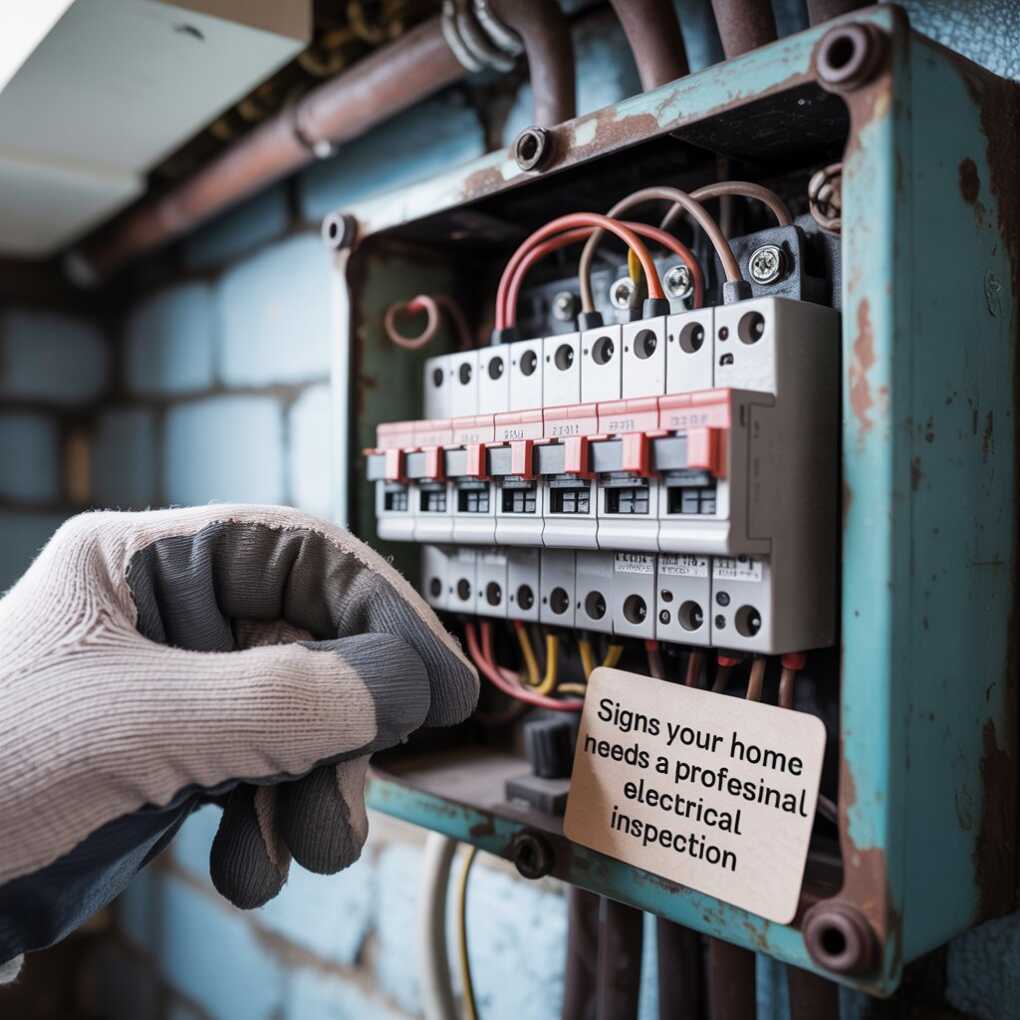Electricity powers nearly everything in a modern home—from lights and appliances to heating and internet connections. Yet, taking it for granted is easy until something goes wrong. Electrical issues often go unnoticed until they pose a risk to safety or cause significant disruptions. That’s why recognizing early warning signs is essential. Knowing when to seek an electrical inspection can prevent minor problems from becoming serious hazards. We will explore the most common and overlooked signs that your home may need professional attention. Identifying these early can keep your household safe and your electrical system running efficiently.

Common Warning Signs That Should Prompt an Electrical Inspection
1. Frequent Circuit Breaker Trips or Blown Fuses
If your circuit breakers trip often or you find yourself replacing fuses more than occasionally, your home’s electrical system could be under strain. Circuit breakers are designed to protect your home by stopping the electrical flow when they detect a fault. When this happens repeatedly, it’s a sign the system is trying to handle more power than it should. This could be due to outdated wiring, overloading of circuits, or even internal faults. Modern appliances demand more power, and older systems often can’t handle the load.
This isn’t something to ignore if you’re resetting breakers or changing fuses often. It may indicate hidden issues like deteriorating wires or improperly installed circuits. An inspection at this stage could reveal outdated panels, undersized service connections, or even incorrectly wired outlets—issues that should be addressed before they cause a fire or complete failure. Reaching out to a trusted electrical company in Yakima, WA, can help diagnose the root of the problem and ensure your system is updated to handle your home’s demands safely and efficiently.
2. Flickering or Dimming Lights
Occasional flickering might not seem like a major issue, but it’s worth investigating when it happens regularly or under certain conditions. Lights that flicker or dim when a large appliance turns on, like an air conditioner or washing machine, suggest an imbalance in your electrical load. Voltage drops or overloaded circuits could cause this. Additionally, dimming lights might point to loose wiring connections or corroded terminals, which are potential fire risks. If you notice that lights in specific areas flicker while others remain stable, this uneven behavior could indicate problems isolated to a particular circuit or junction. Dismissing these signs can result in long-term damage to your electrical devices or worse, an electrical fire. A professional inspection can identify whether the issue stems from your internal wiring, the electrical panel, or even service drops from the utility company.
3. Burning Smells or Discolored Outlets
A faint burning smell with no obvious source should raise immediate concern. Similarly, if your wall outlets or switches show signs of discoloration—typically a brownish or black tint—this could point to heat buildup. Heat is often the result of electrical arcing, which happens when electricity jumps across gaps in connections, generating high temperatures. This is a major sign of compromised wiring, especially if the outlet feels warm to the touch. In some cases, the wiring inside the wall may already be melting or fraying, which could quickly lead to a fire if not handled promptly. These issues might not trip a breaker immediately, making them easy to overlook. Smells of burning plastic or ozone are especially concerning and warrant an immediate inspection. A qualified inspection will trace the source, determine whether rewiring is necessary, and protect your home from potential combustion.
4. Outlets That Spark or Don’t Work Consistently
When you plug something in and notice a spark, or if certain outlets only work intermittently, check them. Sparking can happen occasionally when inserting a plug, but consistent sparking is a sign of underlying trouble. It may indicate loose wiring, water damage inside the wall, or worn-out components. If an outlet works one day and not the next, it could mean the wiring behind it is damaged or the connections are unstable. These types of failures can result in energy arcing, which creates excessive heat.
Over time, this can lead to melted outlets or even house fires. Many older homes also still use ungrounded outlets, which pose their own set of risks, particularly for sensitive electronics. If outlets feel loose or plugs fall out too easily, this is another sign of wear. A professional inspection will identify whether those outlets need replacement, repair, or a complete upgrade to current safety standards.
5. Unusual Buzzing or Humming Noises
Electrical systems are designed to operate silently. So, if you hear buzzing or humming from your outlets, breaker box, or inside the walls, you should not ignore it. These noises are usually caused by faulty wiring, overloaded circuits, or aging electrical panels that no longer function properly. A low hum near light switches or outlets can signal arcing or a poor connection. In extreme cases, it could point to electrical current trying to travel through a faulty path, increasing fire risks. These sounds may also indicate that components vibrate due to high resistance or corrosion, which are both dangerous situations. Noise from the circuit breaker box is particularly troubling, as it may mean the breakers aren’t tripping when they should. If this happens, circuits can overheat without any warning. Prompt inspection can identify whether components inside the panel must be replaced or if a more comprehensive upgrade is necessary.
Conclusion
Staying alert to signs of electrical trouble can help you catch small issues before they become serious hazards. From frequently tripped breakers to buzzing noises or discolored outlets, each symptom signals that your electrical system may not perform safely or efficiently. Getting an inspection when problems first appear could prevent future emergencies, reduce repair costs, and ultimately protect your family. Your home’s electrical safety is not something to postpone—it’s a foundation for everything else in your daily life.
